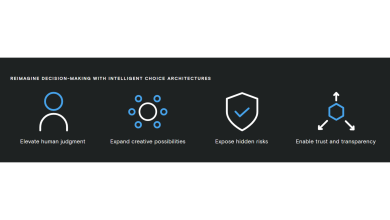
As countries worldwide race to lead the AI revolution, the UK has set out bold ambitions. In January 2025, Prime Minister Keir Starmer declared that “Britain will be one of the great AI superpowers,” promising a pro-innovation approach to regulation through the government’s AI Opportunities Action Plan. Yet a new and less visible cyber risk could undermine these ambitions before they take hold: AI data poisoning.
Unlike traditional cyber-attacks designed to steal data or disrupt services, data poisoning infiltrates the training datasets that underpin AI models. By injecting malicious or misleading information, adversaries can cause systems to produce inaccurate, biased, or even harmful outputs. In government and public-sector contexts, this strikes at the very foundation of AI-driven decision-making. Awareness of the problem remains limited, but the potential impact is profound.
Tackling the “grey space” of government data security
Attackers increasingly target the “grey spaces” where responsibility for data ownership, security, and governance is unclear. For UK government departments, arm’s-length bodies, and the wide network of suppliers, this ambiguity is amplified as AI adoption accelerates. Left unaddressed, these gaps risk becoming entry points for adversaries seeking to contaminate models.
Closing this grey space requires robust data governance and security practices, particularly when working across sprawling public-sector systems and cloud environments. This is not only a technical challenge but also an organisational one: it demands skilled staff, clear accountability, and a stronger understanding of how AI models are built, trained, and deployed.
What the threat landscape looks like
Training and updating AI models is a continuous process. Just as large language models like ChatGPT or Google’s Gemini undergo frequent retraining, government and industry AI systems ingest new data to remain relevant. Malicious actors know this and are probing for ways to tamper with those pipelines.
Recent reporting has shown nation state-linked groups attempting to misuse frontier models, alongside independent demonstrations of model “jailbreaks.” These incidents illustrate how mainstream AI systems can be manipulated and evaluated for weaknesses. The risk is clear: if poisoned data feeds into models that support healthcare triage, benefits administration, or even cyber-threat detection, the downstream consequences could be severe.
Today, most government organisations are poorly equipped to detect when contaminated outputs have entered their data environment. Without strong visibility, provenance, and assurance mechanisms, critical services could be exposed to subtle but dangerous manipulation.
Building resilience from the data up
To counter this risk, the government must take a data-centric approach to cyber resilience. This means treating data governance not just as compliance, but as the first line of defence against poisoning. Key steps include:
- Establishing clear lineage and provenance for all datasets, including origin, access history, and usage.
- Mandating cryptographic signing and versioning of training data and model artefacts.
- Embedding the NCSC’s machine learning security principles and the AI Security Institute’s evaluation methods into departmental procurement and assurance processes.
- Requiring suppliers and partners to provide attestations on data integrity and training pipelines.
- Building a framework for AI Data Governance, that enables organizations to understand Agentic AI behaviour, actions and outcomes, in a surgical manner that will enable roll-back to a known good (or regulatory compliant) state, when mistakes are made.
Immutable, versioned backups of datasets and feature stores also play a vital role. They provide the ability to roll back to a last known-good state if poisoning is suspected. However, backups alone are not enough: they must be paired with anomaly detection, signed artefacts, and provenance checks to ensure organisations are restoring to a clean, trusted baseline.
Five actions to build resilience against AI data poisoning
- Map your AI data estate: Establish visibility over all datasets, models, and suppliers touching government services.
- Secure provenance and lineage: Cryptographically sign, version, and track the origin and history of training data and model artefacts.
- Adopt national guidance: Embed the NCSC’s ML security principles and leverage the AI Security Institute’s evaluations before deployment.
Assure the supply chain: Require partners and vendors to provide attestations of data integrity and training pipeline security. - Prepare for rollback: Maintain immutable, versioned backups of datasets and feature stores, and pair them with anomaly detection to ensure a trusted recovery baseline. Do the same for Agentic AI workflows and be able to rewind to a known good state, when mistakes are made.
- The time to act is now: Britain cannot afford a reactive “bolt-on security” mindset. With critical infrastructure and public trust at stake, AI security must be embedded from the start of digital transformation projects. A whack-a-mole approach has never worked in cyber defence and it certainly won’t work against the subtlety of data poisoning.
If the UK is serious about becoming a global AI superpower, its strategy must extend beyond innovation to resilience. By investing in visibility, governance, provenance, and immutability, the government can ensure that AI serves as a force for good, not a new vector of national vulnerability.



